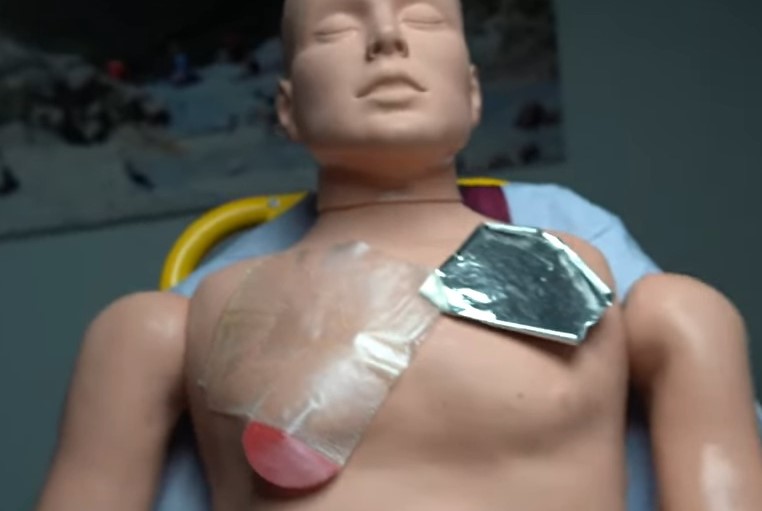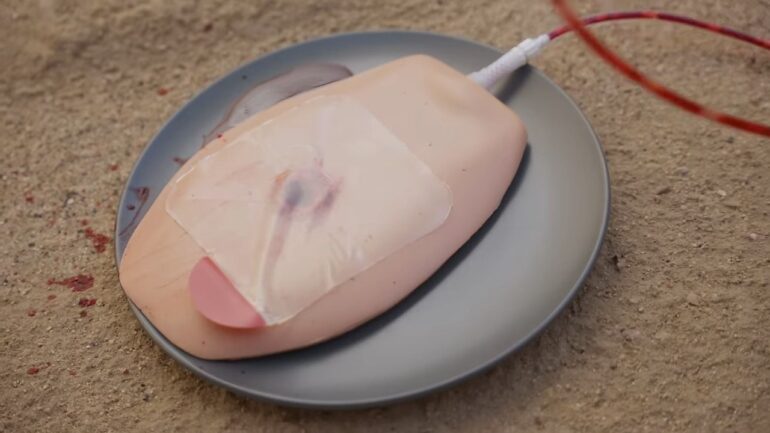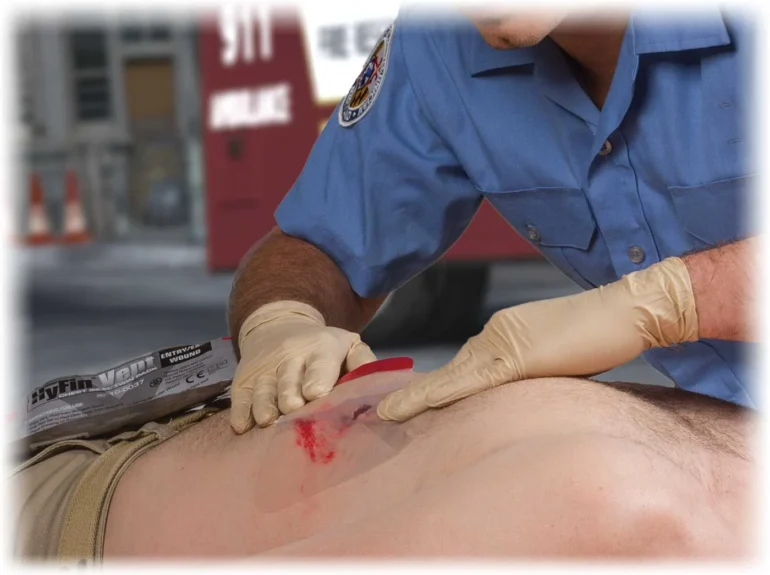Gunshot wounds can be unpredictable and life-threatening. One key tool in handling such wounds effectively is an occlusive dressing. Many people are unfamiliar with what an occlusive dressing is and when it should be applied. In emergencies, having the correct knowledge can make a crucial difference. This article covers occlusive dressings in detail, explaining their purpose, use, and the importance of knowing when to apply them.
Key Points:
- Gunshot wounds require prompt action.
- Occlusive dressings seal wounds and prevent air or fluids from entering.
- Timing and proper use of occlusive dressings are vital.
- Not all gunshot wounds need occlusive dressings.
- Proper wound management can improve survival rates.
What Is an Occlusive Dressing?

An occlusive dressing serves a crucial role in managing gunshot wounds, particularly those involving the chest or neck. It works by sealing the wound, preventing air or fluids from entering and causing further damage. This type of dressing is often used when a wound creates an opening in the chest cavity, potentially allowing air to enter and collapse the lung. The pad keeps the area airtight, stabilizing the injury until more definitive care can be given.
When a gunshot wound occurs, immediate steps must be taken to manage bleeding and reduce the risk of complications like pneumothorax (collapsed lung). Using an occlusive patch helps by providing an airtight seal around the wound. Without it, air could easily enter the chest cavity, leading to life-threatening issues.
When Should an Occlusive Dressing Be Used?
They should be applied when the wound penetrates the chest, neck, or back. These areas are more likely to lead to air entering the body, which can cause complications.
Not all wounds need non-permeable patches. If the injury occurs in the limbs or torso without any risk of air entering the cavity, different dressings may be more appropriate. The key is to recognize when the wound has created an opening that leads to the chest or neck cavity. In those cases, occlusive ones are the right choice.
It is also important to use the dressing properly. A poor application may allow air or fluids to enter, defeating the purpose of the seal. Always ensure it covers the wound completely and sticks securely to the skin. Most non-permeable patches have adhesive to make this easier, but additional tape can be used if necessary.
How Does an Occlusive Dressing Work?

The design of it ensures that no air or fluids can pass through. The adhesive edges stick firmly to the skin, creating a tight barrier around the wound. This prevents air from getting in and causing internal problems like lung collapse. Some dressings come with a valve or vent that allows air to escape from inside the chest but not enter. This can help relieve pressure in cases of tension pneumothorax.
Once applied, it reduces the risk of a collapsed lung and improves the patient’s chance of survival. While it is not a cure, it stabilizes the patient until they can receive proper medical attention.
Step-by-Step Guide to Applying an Occlusive Dressing
Here is a quick step-by-step guide on how to apply an occlusive dressing:
- Assess the wound: Determine if the injury involves the chest or neck. If so, they are necessary.
- Prepare the dressing: Open the package and remove the dressing. Be careful not to touch the adhesive side too much.
- Place the dressing over the wound: Cover the entire wound area, ensuring the edges of the patch stick firmly to the skin.
- Secure the dressing: Press the edges down to create a complete seal. If necessary, use additional tape to reinforce it.
- Monitor the patient: Keep an eye on the patient for signs of increased difficulty breathing, which may indicate tension pneumothorax. If this occurs, a vented dressing or needle decompression may be required.
Knowing how and when to apply non-permeable patches can be the difference between stabilizing a gunshot wound and allowing it to worsen.
What Are the Alternatives to Occlusive Dressings?
There are some situations where other dressings may be more appropriate. For example, wounds to the limbs or superficial injuries may not need non-permeable patch. In those cases, a standard bandage or gauze could be enough. If the wound is small and not penetrating a cavity, using an non-permeable patch might not be necessary.
Some patches have additional features, like one-way valves, while others are more basic. Choose the right type for the situation. A vented pad is better suited for cases where air needs to escape from the chest cavity.
Why Occlusive Dressings Are Vital in Chest Wounds

Chest wounds, especially gunshot wounds, pose a unique risk because they can lead to a collapsed lung. The chest cavity must remain sealed to prevent air from entering, and a non-permeable patch provides that seal. It is essential in any situation where there is a penetrating chest wound. The dressing prevents complications like tension pneumothorax, which can be fatal if not treated promptly.
In addition, they reduce the risk of infection by keeping the wound sealed. An open wound, especially in the chest, can quickly become infected. The wound is covered, protecting it from outside contaminants.
Frequently Asked Questions
1. Can any adhesive bandage work as an occlusive dressing?
No. Regular adhesive bandages do not provide the airtight seal necessary for preventing air from entering a chest wound. An occlusive dressing is specifically designed to provide that seal.
2. How can I tell if a wound needs an occlusive dressing?
If the wound penetrates the chest, neck, or back and poses a risk of air entering the body, then an occlusive dressing is required. Injuries to limbs generally do not need them.
3. How long can an occlusive dressing stay on a wound?
They should remain in place until medical professionals take over care. However, they need to be monitored regularly to ensure they are still creating a good seal.
Conclusion
Gunshot wounds are serious injuries that require immediate and appropriate care. An occlusive dressing plays a key role in handling certain types of gunshot wounds, particularly those affecting the chest, neck, or back. Its ability to seal the wound and prevent air from entering the body can prevent life-threatening complications.
In an emergency, applying the correct dressing can mean the difference between life and death. Always ensure the seal fits the situation and is applied securely for the best results.
